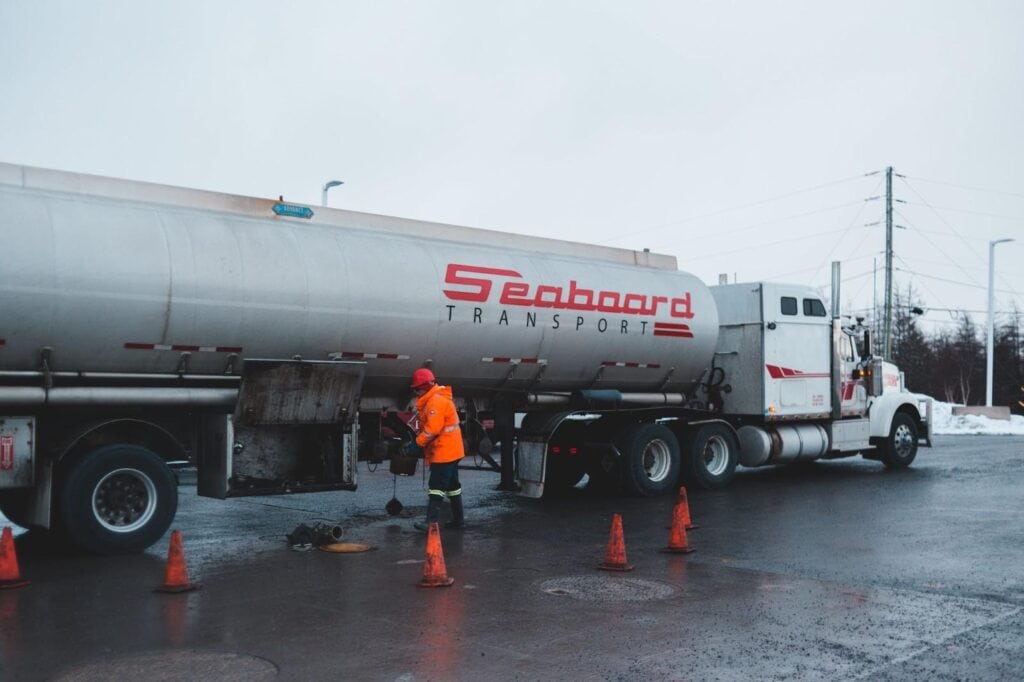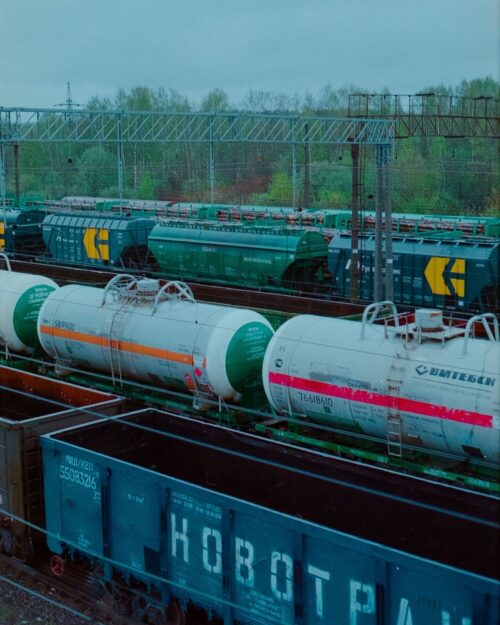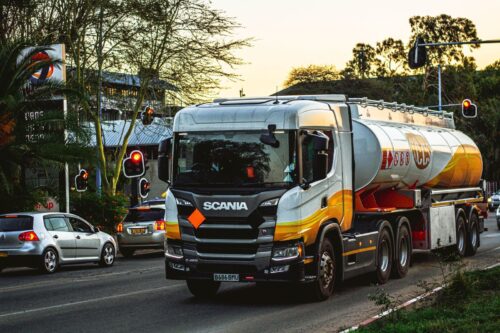Tanker Trucks: Types, Capacity, and Safety

Tanker trucks play a crucial role in the transport industry, efficiently moving various liquids and gases, including fuel, chemicals, and water. These vehicles come in various sizes, from small to large capacities, ensuring the safe and effective delivery of essential substances across distances.
Tanker trucks, essential in the transport industry, carry liquids, gases, and dry bulk worldwide. These vehicles, ranging from large semitrailers to versatile tenders, are tailored to meet specific cargo needs.
Advances in technology have revolutionized their operation, enhancing efficiency and safety.
This guide will explore tanker trucks’ types, capacities, and safety measures, focusing on their vital role in hauling everything from fuel to chemicals.
Large Volume Tanker Trucks
Large-volume tanker trucks, pivotal in the transport industry, are engineered to transport massive amounts of fuel, oil, and chemicals. Capable of carrying between 5,000 and 11,600 gallons, these vehicles are equipped with multiple compartments to handle various materials safely.
These heavy-duty trucks play a vital role in the oil and gas sectors, where their capacity and design ensure efficient and safe delivery of hazardous material, proving essential for the continuous flow of industry operations.
Small Volume Tanker Trucks
Small-volume tanker trucks, such as single-axle tank trucks and mini tankers, are designed for precision in delivering smaller quantities of liquids like diesel fuel, gasoline, and water.
With a maximum capacity ranging from 1,000 to 3,000 gallons, they are perfect for hauling fuel to service stations, chemicals to industrial sites, and water for fire suppression.
Their compact size and specific design allow for easy maneuverability in urban environments and tight spaces, making them a versatile asset in the transport industry.
Types of Cargo Tankers

Tanker trucks come in various forms, each specifically designed to transport different materials, from liquids and gases to dry bulk. These include corrosive cargo tanks, compressed gas tankers, and cryogenic cargo trucks.
Cargo Tank Trucks
Cargo Tank Trucks, often called TC-406/DOT-406 trucks, are designed to transport dangerous goods. Typically made of aluminum, these trucks can have one or multiple compartments and are offered only with 3 axles.
These trucks are crucial for hauling diesel fuel, gasoline, and other hazardous materials, with capacities ranging widely to meet specific transport needs.
Corrosive Cargo Tanks
Corrosive Cargo Tanks, MC-312 (DOT-412), are specialized tanker trucks that transport highly corrosive substances like sulfuric or nitric acid. These tanks are characterized by their circular cross-section and reinforcing rings, ensuring safety and integrity during transport.
With an internal pressure of 35 to 50 psi and a rubber or plastic lining, these stainless steel tanks are built to withstand the rigors of carrying high-specific gravity liquids like grain alcohol.
Compressed Gas Cargo Tanker
Compressed Gas Cargo Tankers, or MC-331, specialize in transporting compressed gases and delivering propane, LPG, and anhydrous ammonia.
These vehicles, built to withstand pressures of 100 to 500 psi, are made from carbon steel and are typically white to prevent UV damage. Equipped with advanced safety mechanisms, these tankers ensure the secure and efficient transport of compressed gases to meet the demands.
Cryogenic Cargo Tank Truck
Cryogenic Cargo Tank Trucks (MC-338) transport cryogenic liquids like nitrogen, oxygen, argon, and hydrogen. These insulated vehicles, with a volume capacity of 4,500 to 5,550 gallons, are crafted from aluminum or mild steel to preserve the low temperatures.
Equipped with relief valves, they safely manage internal pressure while delivering these critical cryogenic materials.
High-Pressure Tube Tanks and Trailer Trucks
High-pressure tube tankers and trailer trucks are designed to transport industrial gases efficiently under high pressure. These trailers, equipped with 4-36 high-pressure tanks, range from 20 to 53 feet long and can carry a significant payload.
They serve as a “rolling pipeline,” providing a continuous gas supply for businesses and eliminating the need for frequent cylinder changes. This system is crucial for industries relying on a steady flow of gases for their operations.
Dry Bulk Pneumatic Hopper Trailer
Dry Bulk Pneumatic Hopper Trailers are engineered to efficiently transport dry bulk materials, such as cement, plastic pellets, and grain. With capacities ranging from 1,050 to 2,000 cubic feet, these trailers use pressurized air to unload materials through a piping system.
The aluminum or steel construction and 45-degree hopper slope facilitate the easy flow of materials, making these trailers a staple in industries requiring bulk material transport.
Evolution of Tanker Trucks
The evolution of tanker trucks from horse-drawn carriages to the sophisticated vehicles we see today marks a significant advancement in the transportation industry.
Initially, the petroleum industry relied on horses to move barrels, a method that evolved with the introduction of tank wagons in the 1880s, boosting efficiency and safety. The 20th century ushered in motorized tankers, revolutionizing short-distance deliveries alongside the rise of pipelines and railroads for longer hauls.
Today’s tanker trucks, capable of transporting diverse substances, including hazardous materials, boast significant capacities of up to 11,600 gallons. Modern designs prioritize safety and environmental protection, featuring insulated or non-insulated, pressurized, or non-pressurized compartments made from spark-resistant aluminum.
Tanker Transport and Safety Regulations

Tanker truck transport and safety regulations are governed by the Federal Motor Carrier Safety Administration (FMCSA), part of the U.S. Department of Transportation (DOT).
These regulations ensure the safe transport of hazardous materials, including flammable or combustible liquids, acids, caustics, and poisonous substances. The FMCSA enforces rules on vehicle operation, driver qualifications, and cargo handling to minimize risks on the road.
Tank Safety Features
Regulated safety features for tanker trucks include:
- Spill containment systems to prevent leaks during accidents.
- Pressure relief valves to manage internal tank pressure.
- Emergency shutoff mechanisms for quick response in emergencies.
- Rollover protection to maintain tank integrity on impact.
- Regular inspections and maintenance to ensure safety.
- Driver training programs focusing on hazardous material handling.
FAQs
1. What is a tanker truck called?
A tanker truck, often called a tank truck, is a vehicle engineered explicitly for transporting liquid or gaseous substances.
2. What goes in a tanker truck?
Tanker trucks are versatile, depending on their design, transporting various contents, including fuels, chemicals, water, and gases.
3. What are the different size tanker trucks?
Tanker trucks vary in size from smaller models carrying less than 3,000 gallons to larger ones capable of transporting over 11,600 gallons.
Tanker Trucks in Modern Logistics
Tanker trucks play a crucial role in the transport industry, efficiently moving various liquids and gases, including fuel, chemicals, and water.
These vehicles come in various sizes, from small to large capacities, ensuring the safe and effective delivery of essential substances across distances.
